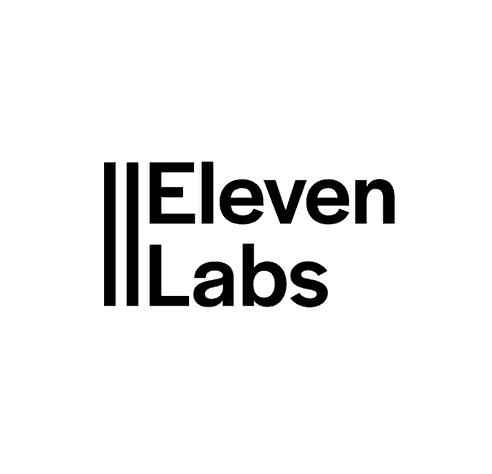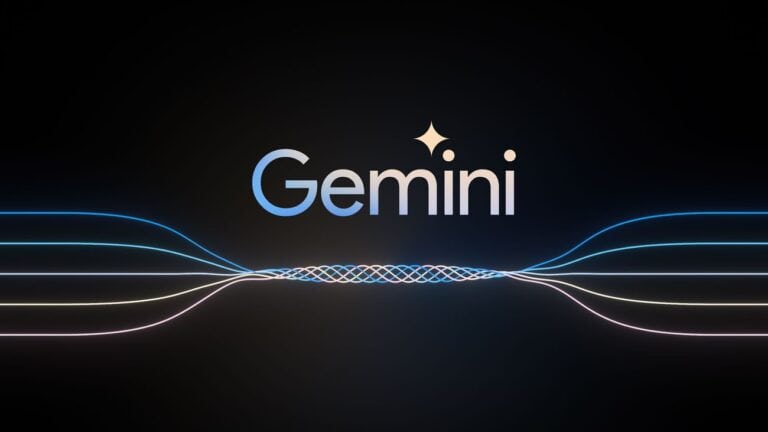With the increasing use of artificial intelligence, it’s now more important than ever to be able to tell the difference between real human voices and those created by AI. We use AI voice detectors to identify and separate synthetic voices from natural ones. These detectors act as a defense against the misuse of AI to create misleading audio. As deepfake technology becomes more advanced, these detectors are crucial for maintaining authenticity and fighting against false information.
In addition to providing security, AI voice detectors also help various industries that rely on voice recognition technology to be more accurate and effective. By making sure that the voices systems interact with are real, organizations can protect themselves from fraud and give their customers peace of mind. These detectors are particularly relevant because they not only help prevent potential scams, but also assist law enforcement and security measures by identifying fraudulent audio content.
What Is an AI Voice Detector?
An AI voice detector is a tool designed to analyze audio recordings and determine whether they were generated by artificial intelligence or spoken by a real human. These detectors use machine learning models trained on vast datasets of both synthetic and natural voices to identify patterns in tone, pitch, cadence, and waveform anomalies.
Common use cases include:
- Detecting deepfake audio in social media and news.
- Verifying voice authenticity in business communications.
- Preventing fraud in banking and customer service.
- Protecting creators from unauthorized voice cloning.
🏆 The Best AI Voice Detectors of 2025
1. Undetectable.ai Voice Detector
Best for: Quick, free detection
Key features:
- Free tool with no login required
- Upload audio files for instant AI detection
- Detects AI-generated voices and deepfakes with high reliability
Why it stands out: Perfect for individuals and small teams who need a fast, no-cost way to verify authenticity.
👉 Try it here
2. OpenTools AI Voice Detector
Best for: Professional-grade accuracy and cybersecurity
Accuracy: ~92% (as of October 2025)
Key features:
- Detects AI-generated voices across multiple platforms (YouTube, WhatsApp, TikTok, Zoom, Google Meet)
- Offers cybersecurity integrations and fraud prevention tools
- Designed for enterprise and law enforcement use
Why it stands out: Combines deepfake detection with cybersecurity, making it ideal for organizations combating audio manipulation.
(Source: OpenTools.ai)
3. Murf.ai Voice Detector
Best for: Transcription accuracy and workflow integration
Key features:
- Built-in AI detection for transcription quality control
- Integrates with Murf’s AI voice generation and editing tools
- Ideal for media teams and content producers
Why it stands out: Helps creators ensure their transcriptions and audio outputs are authentic and compliant.
(Source: Murf.ai Blog)
4. Vertru AI Voice Verification Suite
Best for: Businesses and educational institutions
Key features:
- AI audio verification for compliance and security
- Multi-language and multi-accent detection
- Real-time monitoring for live calls and meetings
Why it stands out: Offers enterprise-level protection against voice spoofing and deepfake threats.
(Source: Vertu.com)
5. DDIY’s Top AI Voice Detectors (Roundup)
Best for: Comparison shoppers
Key features:
- Comprehensive list of top detectors
- Reviews for both free and paid tools
- Ideal for users exploring multiple options
Why it stands out: A great starting point for anyone new to AI voice detection.
(Source: DDIY.co)
⚙️ How to Choose the Right AI Voice Detector
When selecting an AI voice detector, consider:
- Accuracy rate – Look for tools with >90% detection reliability.
- Speed – Instant detection is key for real-time verification.
- Integration – Choose tools that fit into your workflow (CRM, video calls, transcription software).
- Privacy – Ensure the platform doesn’t store uploaded audio without consent.
- Cost – Some tools offer free plans, while enterprise-grade detectors may require subscriptions.
🔒 Final Thoughts
AI voice detectors are becoming essential tools in the fight against misinformation and fraud. Whether you’re a journalist verifying sources, a business protecting your brand, or a creator safeguarding your work, these detectors can help maintain trust in the age of synthetic media.
As deepfake technology evolves, expect these tools to become even more accurate and accessible — making AI voice authenticity verification a standard part of digital communication.
Sources:
- Undetectable.ai Voice Detector
- OpenTools.ai Voice Detector
- Murf.ai Blog
- Vertu.com
- DDIY.co
- CyberNews AI Detector Review 2025
The Rise of AI Voice Detection Technology
The rise of artificial intelligence (AI) has brought about a new wave of technological advancements, including the ability to generate incredibly realistic human voices. While this technology has its benefits, it also poses a threat in the form of deepfakes, which can be used to spread misinformation or impersonate others. To combat this threat, AI voice detectors have emerged as a crucial tool for identifying and flagging synthetically generated speech.
How AI Voice Detectors Work
AI voice detectors utilize advanced algorithms to analyze various characteristics of a voice recording, such as intonation, cadence, and frequency patterns. By comparing these characteristics to a vast database of real human voices, the detector can determine the likelihood that the audio was generated by AI.
Key Features of AI Voice Detectors
- Accuracy: The most effective detectors boast high accuracy rates in distinguishing between real and AI-generated voices.
- Speed: Many detectors can analyze audio in real-time, making them ideal for live monitoring situations.
- Ease of Use: User-friendly interfaces allow even non-technical users to utilize these tools effectively.
Applications of AI Voice Detection
The potential applications of AI voice detection technology are vast and varied.
Combating Deepfakes
By identifying and flagging deepfakes, AI voice detectors can help prevent the spread of misinformation and protect individuals from being impersonated.
Enhancing Security
In industries like banking and finance, voice authentication is often used for security purposes. AI voice detectors can add an extra layer of protection by ensuring that the voice being authenticated is indeed that of the authorized user.
Improving Accessibility
AI voice detectors can be used to improve accessibility for individuals with speech impairments by transcribing their speech into text with greater accuracy.
Leading AI Voice Detection Tools
| Tool | Features |
|---|---|
| ElevenLabs | Detects audio generated using their AI voice cloning platform. |
| Deepgram | Analyzes audio files to identify AI-generated voices. |
| PlayHT | Offers a free AI voice classifier. |
| Resemble AI | Provides an AI voice detector API for developers. |
| Microsoft Azure | Offers various AI-powered speech analysis tools. |
| Google Cloud Platform | Includes AI-based speech-to-text and voice recognition services. |
The Future of AI Voice Detection
As AI technology continues to evolve, so too will AI voice detectors. We can expect to see even more sophisticated and accurate detectors in the future, capable of identifying even the most subtle nuances of human speech. This technology will play a crucial role in combating the misuse of AI-generated voices and ensuring that our digital world remains safe and secure.
For further information on AI voice detection technology, please visit the websites of the companies mentioned above.
Key Takeaways
- AI voice detectors differentiate between synthetic and real human voices.
- These tools are instrumental in safeguarding against AI-generated audio misuse.
- The technology offers protection and supports authenticity for various industries.
Technological Foundations and Practical Applications
In examining AI voice detectors, it’s crucial to understand their technological underpinnings and their varied practical uses across industries. This section delves into the technology itself, industries it serves, and the associated ethical challenges.
Understanding AI Voice Detection Technology
AI voice detectors are advanced systems designed to identify and distinguish human voices from AI-generated ones. The technology hinges on machine learning algorithms that analyze audio for irregularities or patterns uncharacteristic of human speech. Neural vocoder artifacts, subtle distortions or anomalies introduced by voice synthesis processes, become telltale signs for detection tools.
- Artifacts Detection:
- Neural Vocoder Artifacts: Recognized through spectral deviation from natural human voice patterns.
- Temporal Inconsistencies: Unnatural speech flow or rhythm identified by the detector.
The primary objective of voice detectors is to discern real from synthetic to maintain authenticity in voice transactions.
Practical Uses in Various Industries
AI voice detection serves crucial functions across several industries, enhancing security and efficiency. Key sectors include:
Telecommunications:
- Voice Scams Prevention: Screening calls for authenticity, thus protecting consumers from fraud.
- Voice Verification: Ensuring the caller’s identity matches billing or account records.
Business Services:
- Content Management: Monitoring for potential misuse of AI-generated voices.
By addressing recognition and verification demands, these technologies are pivotal in combating voice-based deceptive practices and in safeguarding data integrity.
Challenges and Ethical Considerations
With the proliferation of AI voice and audio manipulation, distinguishing between human and synthesized speech has become both complex and imperative for protection against misuse.
Challenges:
- Accuracy: Ensuring over 90% accuracy in detection rates to maintain reliability.
- Advancements: Keeping up with the continuous evolution of deepfake technologies.
Ethical Concerns:
- Privacy: Balancing effective detection with the privacy of individuals whose voices are analyzed.
- Consent: Ensuring use of voice detection technology aligns with legal and moral standards regarding consent.
As AI continues to sophisticate, it’s vital that AI voice detectors are developed responsibly and consider the wide-ranging implications of their use.







